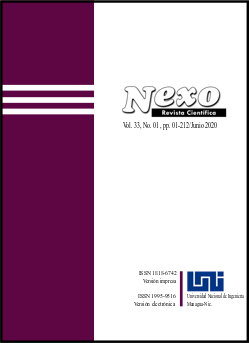Providing optimal dynamic model of traffic lights in super saturated conditions with emphasis on ATM
DOI:
https://doi.org/10.5377/nexo.v33i01.10059Keywords:
Dynamic model, Active Traffic Management (ATM), Transportation, TravelAbstract
Dynamic signal control strategies are effective in relieving congestions during nontypical days, such as those with high demands, incidents with different attributes, and adverse weather conditions. This research recognizes the need to model the impacts of dynamic signal controls for different days representing, different demand and incident levels. Methods are identified to calibrate the utilized tools for the patterns during different days based on demands and incident conditions utilizing combinations of real-world data with different levels of details. A significant challenge addressed in this study is to ensure that the mesoscopic simulation-based dynamic traffic assignment (DTA) models produces turning movement volumes at signalized intersections with sufficient accuracy for the purpose of the analysis. A new model is developed to estimate the drop in capacity at the incident location by considering the downstream signal control queue spillback effects. A second model is developed to estimate the reduction in the upstream intersection capacity due to the drop in capacity at These regression models are combined with the DTA model to estimate the volume at the incident location and alternative routes. The volumes with different demands and incident levels, resulting from DTA modeling are imported to a microscopic simulation model for more detailed analysis of dynamic signal control. The microscopic model shows that the implementation of special signal plans during incidents and different demand levels can improve mobility the midblock incident location as estimated by the first model measures.
Downloads
Downloads
Published
How to Cite
Issue
Section
License
Copyright (c) 2020 Array

This work is licensed under a Creative Commons Attribution 4.0 International License.
The authors who publish in Nexo Scientific Journal agree to the following terms:
- Authors retain the copyright and grant the journal the right of the first publication under the license Creative Commons Attribution License https://creativecommons.org/licenses/by/3.0/, which allows others to share the work with a recognition of the authorship of the work and the initial publication in Nexo Scientific Journal.
- Authors may separately establish additional agreements for the non-exclusive distribution of the version of the work published in the journal (for example, in an institutional repository or a book), with the recognition of the initial publication in Nexo Scientific Journal.
- Authors are allowed and encouraged to disseminate their works electronically (for example, in institutional repositories or in their own website) before and during the submission process, as it can lead to productive exchanges, as well as earlier and greater citation of published works.











